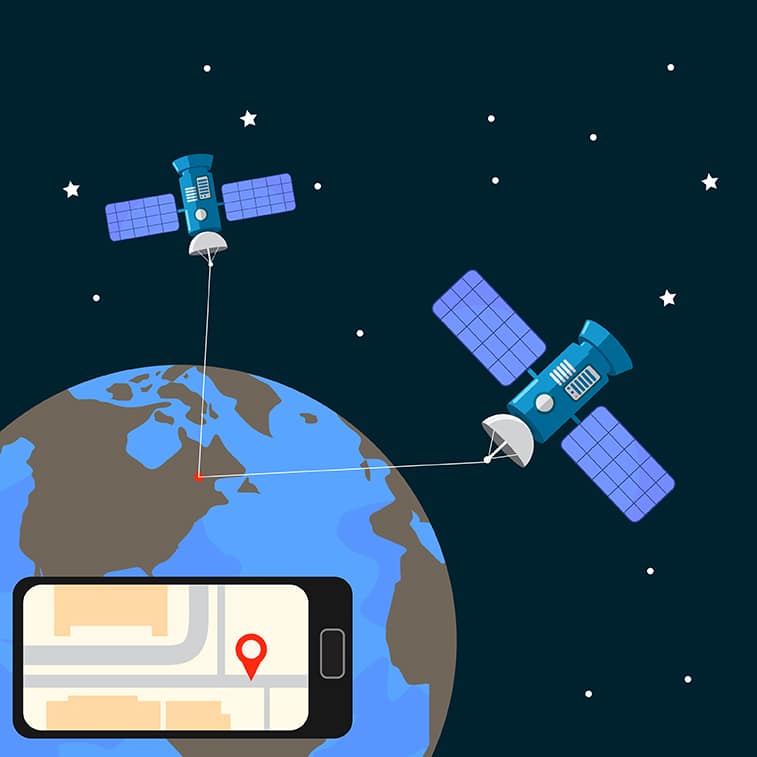Satcom powers everything from high-speed internet to disaster response—yet its growing exposure to cyber threats raises urgent questions about security and resilience.
In the silent vastness of space, satellites drift unnoticed above Earth, but their role is indispensable to billions. These technological marvels, orbiting thousands of kilometres overhead, act as the unseen sentinels of civilisation. They beam internet to remote villages, track hurricanes before landfall, and guide aircraft safely across oceans. But behind this façade of seamless service lies a growing threat—one that could dismantle the very foundations of global connectivity and security if left unaddressed.

Dark skies hide more than just stars—they mask an invisible war fought every second to protect the signals powering modern life. A stark reminder came in 2019, when GPS disruptions swept across Scandinavia, leaving pilots disoriented, ships adrift, and smartphones misaligned. Initially traced to suspected Russian interference, the incident revealed a sobering truth: satellite communication systems are far more exposed than many realise. What was once a technological luxury has become a critical infrastructure. Satellite communication now underpins everything from global internet and defence networks to emerging technologies like 5G non-terrestrial networks (NTN). Yet, as these systems expand, so does the risk of increasingly complex and targeted attacks.
Fortress in space: Securing satellites from within
Security at the system level within satellites themselves remains critical. This entails implementing robust physical and cyber security measures to protect onboard computers, communication equipment, and sensitive data. These include:
Hardware security
Employing tamper-proof hardware, secure boot mechanisms, and hardware-based security modules
Software security
Enforcing secure coding practices, conducting regular security audits, and patching software vulnerabilities promptly
Physical security
Protecting satellites from unauthorised access and tampering during manufacturing, launch, and on-orbit operations
Despite these measures, history contains numerous examples of satellite security breaches, each offering a stark reminder of the challenges involved. One notable case involved the compromise of a ground control station, granting unauthorised access and control over a spacecraft. This highlighted the importance of securing ground infrastructure and personnel. Another breach exploited a vulnerability in satellite software, enabling attackers to access sensitive data. These incidents, though concerning, have offered critical lessons, emphasising the need for continuous vigilance, proactive threat intelligence, and rapid response capabilities.
The new frontier: 5G NTN security
The integration of satellites into 5G networks marks one of the most significant advances in telecommunications. 5G NTN extends cellular coverage to previously unreachable areas but introduces unique security challenges. Its architecture differs fundamentally from traditional satellite communications, incorporating network slicing and software-defined networking (SDN).
Key security priorities in 5G NTN include protection against jamming, secure handovers between terrestrial and satellite networks, and end-to-end encryption across hybrid systems. The 3rd Generation Partnership Project (3GPP) has developed specific security standards for NTN, including enhanced authentication mechanisms and specialised encryption protocols designed to address satellite-specific constraints, such as increased latency.
The broadcast nature of satellite signals makes them particularly susceptible to interception. To counter this, 5G NTN integrates advanced security measures, including dynamic key generation and quantum-resistant cryptographic algorithms. Sophisticated beam-hopping techniques further minimise the risks of signal interception and jamming.

Legacy systems and modern security: The DVB-S2 challenge
Digital video broadcasting – Satellite second generation (DVB-S2) continues to serve as a cornerstone of satellite communications, particularly in broadcasting and broadband delivery. While DVB-S2 was introduced with baseline security features, evolving threats have necessitated significant updates.
The primary security mechanism within DVB-S2 is the conditional access system (CAS), which governs access to broadcast content. However, CAS has faced several vulnerabilities over the years. In 2013, a major European broadcaster discovered its DVB-S2 signals were being pirated, resulting in millions in lost revenue. This prompted the development of enhanced encryption standards and the adoption of dynamic key management.
Contemporary DVB-S2 systems now employ additional protective layers, including advanced scrambling algorithms and real-time monitoring that detects and counters unauthorised access. Watermarking and fingerprinting have also been widely adopted to trace and prevent signal piracy.
The backbone of modern connectivity: Satcom systems
Satellite communication (Satcom) systems, such as 5G NTN (non-terrestrial networks) and DVB-S2 form the backbone of modern communication. They enable high-speed internet, television broadcasting, military operations, disaster recovery, and scientific exploration. As technologies like 5G NTN integrate terrestrial and satellite networks, they promise unparalleled global coverage. However, this convergence also expands the attack surface, exposing Satcom systems to cyber threats that could disrupt entire economies and jeopardise national security.
For instance, 5G NTN’s reliance on satellites for seamless connectivity creates vulnerabilities in its ground stations, communication protocols, and satellite hardware. Similarly, DVB-S2, known for efficient data transmission, is not immune to interception or manipulation if security measures falter. The question looms large: How can these critical infrastructures be protected from malicious actors?
The role of space agencies in securing communications
OOPS! THIS IS EFY PRIME CONTENT...
which means that you need to be an EFY PRIME subscriber to read it.
EFY PRIME content is our best content. Hence, you need to make a small investment to access all of our content including EFY Prime content.
If you're already an EFY PRIME member, feel free to login below.
Else, CLICK HERE to invest in an EFY Prime account and become our VIP customer who can access all our content, and that too without the clutter of ads!
BENEFITS OF EFY PRIME MEMBERSHIP:
(1) Zero Clutter AD free experience
(2) Super-fast user experience
(3) Focussed reading experience with no distractions
(4) Access to all our content including our Best-of-Best which is EFY Prime







